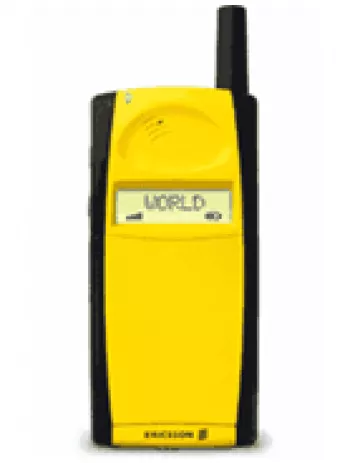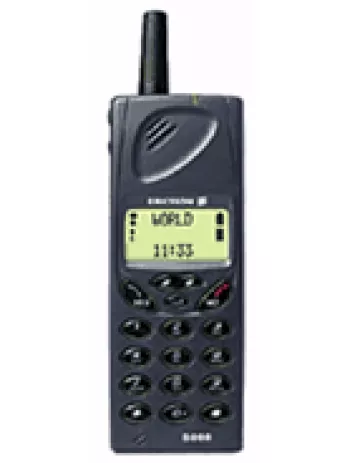
Overview of Ericsson GH 337
The Ericsson GH 337 was a pivotal mobile device in the mid-1990s, embodying the early days of mobile telephony when phones were transitioning from luxury items to widespread communication tools. Introduced in 1995, the GH 337 was a significant model by Ericsson, a company that was a major player in the telecommunications industry at the time.
Design and Build
The GH 337 featured a classic, robust design that was typical of mobile phones in that era. Measuring 130 x 49 x 24 mm and weighing 193 grams, it was considered portable for its time, though quite hefty by today’s standards. The phone was built to be durable with a sturdy plastic casing, reflecting the lack of fragility concerns that are commonplace with modern smartphones. The SIM card slot was designed for mini-SIM cards, which became a standard for mobile phones.
Display and Interface
The display of the GH 337 was basic, using an alphanumeric screen that supported a resolution of 3 x 12 characters. This limited display was used primarily for simple operations such as typing and reading short text messages, accessing the phonebook, and navigating through rudimentary menus. Unlike today's touchscreens, the interface relied on physical keys with tactile feedback.
Communication Capabilities
Operating on the GSM 900 band, the GH 337 allowed users to make and receive calls across much of Europe, where GSM technology was rapidly being adopted. However, it lacked capabilities for data services like GPRS or EDGE, confining its use to voice communication and receiving SMS messages only. This reflects its status as a feature phone, where functionality was basic and focused primarily on telephony.
Battery Life
The device housed a removable NiMH battery with a capacity of 915 mAh. It provided a stand-by time of up to 25 hours and a talk time of approximately 110 minutes, which was adequate for the usage demands of that time. For long phone conversations or frequent usage, charging was a regular requirement, but the removable nature of the battery made it easy to swap when necessary.
Sound and Alerts
The GH 337 did not have a loudspeaker or a 3.5mm headphone jack, characteristics typical of feature phones from that era. Alert types were limited to monophonic ringtones, which were customizable to some extent but nowhere near the polyphonic or true-tone capabilities that would come later.
Additional Features
Despite its limited functionality compared to modern standards, the GH 337 included essential features for everyday use. These included a clock and an alarm, ensuring that users could manage their time even without additional devices. However, the device lacked support for games, a web browser, or Java applications, which meant its utility was strictly professional or practical.
Legacy and Discontinuation
The Ericsson GH 337 was eventually discontinued as newer, more advanced models entered the market. Its legacy, however, remains as a step in the evolution of mobile technology, bridging the gap between early bulky models and the sleeker, more functional devices that followed. As mobile technology rapidly advanced, devices like the GH 337 became relics of the past, remembered fondly by those who used them in the nascent days of mobile communication.
Key Features of Ericsson GH 337
- GSM Technology: Supports GSM 900 network.
- Compact Design: Dimensions of 130 x 49 x 24 mm makes it relatively portable for its time.
- Lightweight: Weighing 193 g, it is lightweight compared to contemporary models.
- Alphanumeric Display: The display supports 3 x 12 characters, sufficient for basic interactions.
- Mini-SIM: Utilizes a Mini-SIM card, which was standard at the time.
- Basic Messaging: Can receive SMS messages, providing essential communication needs.
- Battery Life: Offers a talk time of up to 110 minutes and a standby time of 25 hours with its removable NiMH 915 mAh battery.
- Basic Alerts: Comes with monophonic ringtones for alerts.
Disadvantages of Ericsson GH 337
- Lacks modern connectivity features like GPRS and EDGE.
- Heavy weight of 193 g makes it less portable compared to modern devices.
- Uses Mini-SIM, which is a less common format today.
- Limited display with alphanumeric screen showing only 3 x 12 characters.
- No expandable storage or phonebook capability.
- Absence of a loudspeaker and 3.5mm audio jack limits sound options.
- No support for Bluetooth, WLAN, GPS, or radio connectivity.
- Messaging limited to receiving SMS only, no sending capability.
- No built-in games or Java support for additional applications.
- Very limited battery life with only 25 hours of standby and 110 minutes of talk time.
View Also
More Phones
All Rights Reserved +14266 Phones © Mobilawy 2025

























